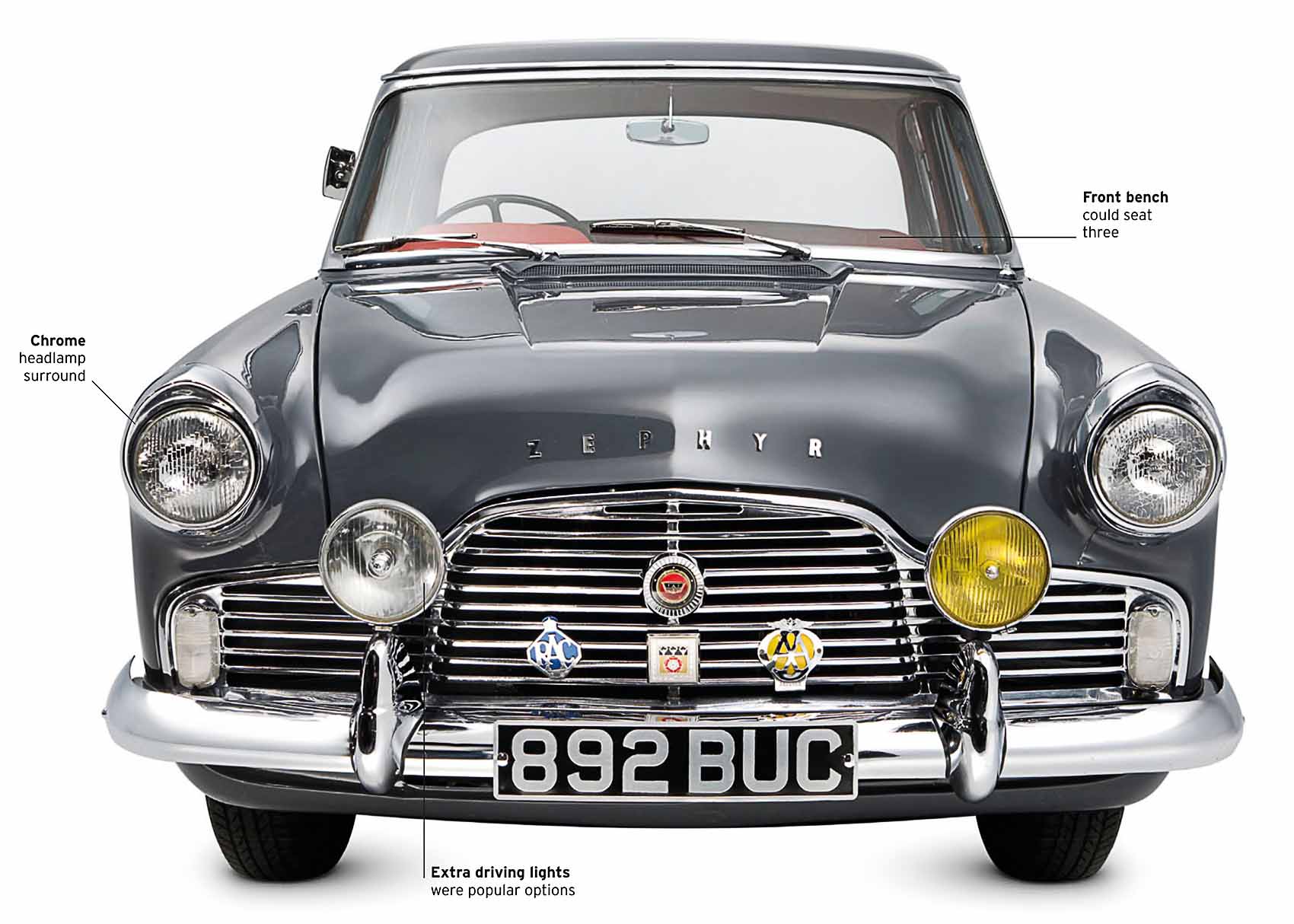
Family Cars
These bigger saloons were the sort of cars people aspired to, purchasing them as their children grew and their careers progressed. They were cars driven by managers rather than their staff. Rarely the most exciting models in their makers’ line-ups, they were often big enough sellers and commanded a high enough price to be the first cars in their ranges to have design sophistications such as independent suspensions or all-of-a-piece bodies that did away with separate chassis frames. They were often among the first truly new vehicles produced after World War II, taking over from designs that dated back to the 1930s.
Ford Zephyr Mk II, 1956

| Origin | UK |
| Engine | 2,553 cc, straight-six |
| Top speed | 90 mph (145 km/h) |
Replacing the slab-sided 1951 Zephyr, the Mk ll gained a stylish, chassis-less body with strong American overtones, column gear levers umbrella handbrakes, and strip speedometers. Soon these cars were available with overdrive and automatic transmissions, but still retained vacuum wipers that slowed down as the car sped up.

Long and low
The longer wheelbase of the Mk II Consul, Zephyr, and Zodiac models permitted sleeker looks with a lower stance; the wraparound rear window greatly increased visibility.

Dashboard style
With its ribbon speedometer, large steering wheel with chrome ring horn push, and column gear lever, the Zephyr had a typical 1950s dashboard.
Opel Olympia Rekord, 1953

| Origin | Germany |
| Engine | 1,488 cc, straight-four |
| Top speed | 75 mph (121 km/h) |
Opel first used the name Rekord as a version of its existing Olympia models, but it would be applied to a series of ever bigger saloons until 1986. The first Rekord replaced a 1930s’ design and had American-inspired styling. Opel was, and still is, owned by US car giant General Motors.
Alfa Romeo 1900, 1950

| Origin | Italy |
| Engine | 1,884 cc, straight-four |
| Top speed | 103 mph (166 km/h) |
The 1900 was the first Alfa Romeo without a chassis and the first to be engineered for mass production—older Alfas were low volume and many parts were made and built by hand. With its twin-cam engine and full-width, aerodynamic body, the 1900 was a truly modern car.
Mercedes-Benz 220, 1954

| Origin | Germany |
| Engine | 2,195 cc, straight-six |
| Top speed | 101 mph (162 km/h) |
The first Mercedes not to have a chassis, the 1953-launched 220 was still a solid and well-made car whose body found a ready market. It was popular with everyone from affluent businessmen to taxi drivers who liked the diesel versions. Six-cylinder petrols arrived in 1954, and the car sold well.
Volvo PV544, 1958

| Origin | Sweden |
| Engine | 1,583 cc, straight-four |
| Top speed | 95 mph (153 km/h) |
The first Volvo to sell in quantity outside Scandinavia, the PV544 quickly established a reputation for quality construction and a robust toughness. With its chassis-less body, independent front and coil spring suspension, it handled well too. The PV544 continued in production until 1965.
It is a quote. The Classic Car Book – The Definitive Visual History 2016




